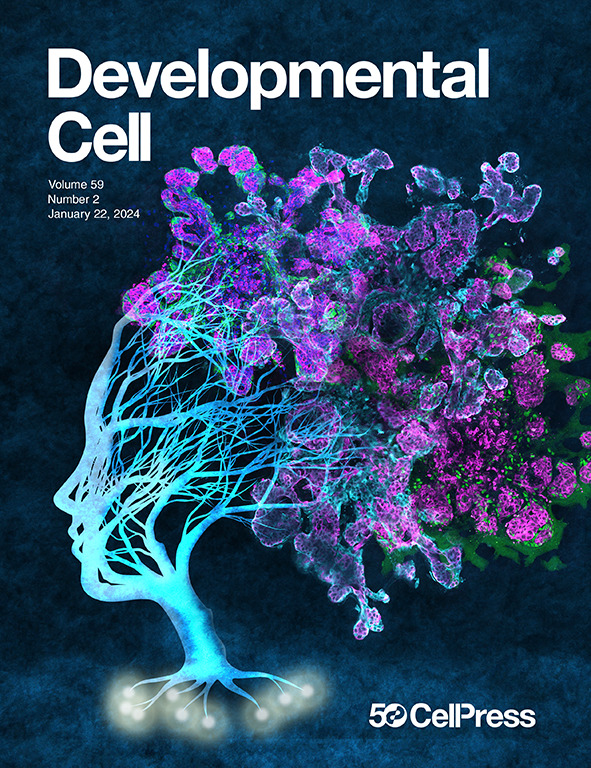Cloche/Npas4l is a pro-regenerative platelet factor during zebrafish heart regeneration
IF 8.7
1区 生物学
Q1 CELL BIOLOGY
引用次数: 0
Abstract
Zebrafish has full capacity of heart regeneration, but little is known about how blood cells, especially platelets, are involved in this regenerative process. Here, we report that cloche/npas4l is a pro-regenerative platelet factor for heart regeneration. We found that haploinsufficiency of npas4l disrupted cardiomyocyte (CM) and endothelial cell (EC) proliferation and heart regeneration after injury. A single-cell transcriptomic atlas identified that npas4l was dynamically expressed in platelets after heart injury and controlled robust interactions between platelet-CMs or -ECs. Decreasing platelets impaired CM/EC proliferation, and overexpression of npas4l in platelets sufficiently induced CM/EC proliferation in uninjured hearts, as well as rescued CM/EC proliferation defects in cloche mutants. Mechanistically, Npas4l positively controlled a panel of ligand expression, including bmp6 in platelets, to fine-tune CM proliferation and heart regeneration. Therefore, this work demonstrates platelet Npas4l signaling and presents mechanisms on how platelets modulate CM/EC proliferation via ligand-receptor network during zebrafish heart regeneration.

Cloche/Npas4l是斑马鱼心脏再生过程中的促再生血小板因子
斑马鱼具有完全的心脏再生能力,但人们对血细胞,尤其是血小板是如何参与这一再生过程的知之甚少。在这里,我们报道cloche/npas4l是促进心脏再生的血小板因子。我们发现npas4l的单倍不足会破坏心肌细胞(CM)和内皮细胞(EC)的增殖和心脏再生。单细胞转录组图谱发现,心脏损伤后,npas4l在血小板中动态表达,并控制血小板- cms或-ECs之间的强大相互作用。血小板减少会损害CM/EC的增殖,而血小板中npas4l的过表达充分诱导了未损伤心脏的CM/EC增殖,并挽救了时钟突变体的CM/EC增殖缺陷。在机制上,Npas4l积极控制一组配体表达,包括血小板中的bmp6,以微调CM增殖和心脏再生。因此,这项工作证明了血小板Npas4l信号传导,并提出了斑马鱼心脏再生过程中血小板如何通过配体受体网络调节CM/EC增殖的机制。
本文章由计算机程序翻译,如有差异,请以英文原文为准。
求助全文
约1分钟内获得全文
求助全文
来源期刊

Developmental cell
生物-发育生物学
CiteScore
18.90
自引率
1.70%
发文量
203
审稿时长
3-6 weeks
期刊介绍:
Developmental Cell, established in 2001, is a comprehensive journal that explores a wide range of topics in cell and developmental biology. Our publication encompasses work across various disciplines within biology, with a particular emphasis on investigating the intersections between cell biology, developmental biology, and other related fields. Our primary objective is to present research conducted through a cell biological perspective, addressing the essential mechanisms governing cell function, cellular interactions, and responses to the environment. Moreover, we focus on understanding the collective behavior of cells, culminating in the formation of tissues, organs, and whole organisms, while also investigating the consequences of any malfunctions in these intricate processes.
 求助内容:
求助内容: 应助结果提醒方式:
应助结果提醒方式:


